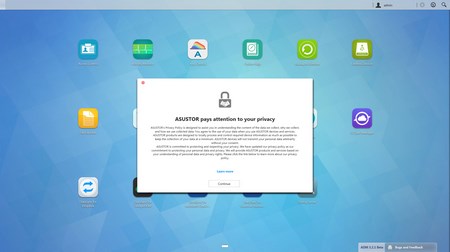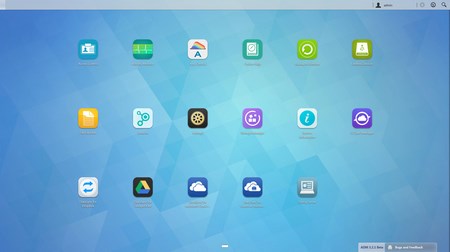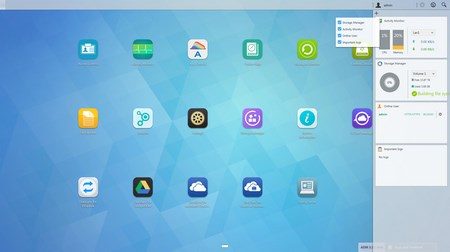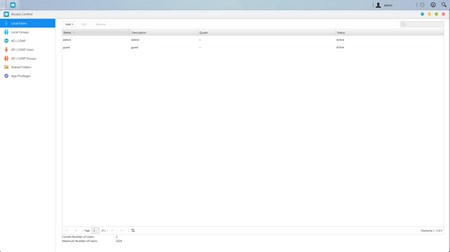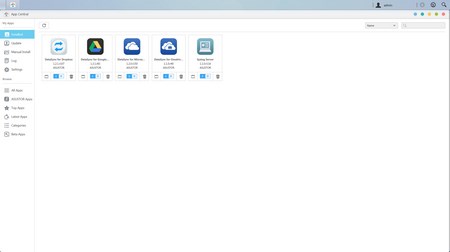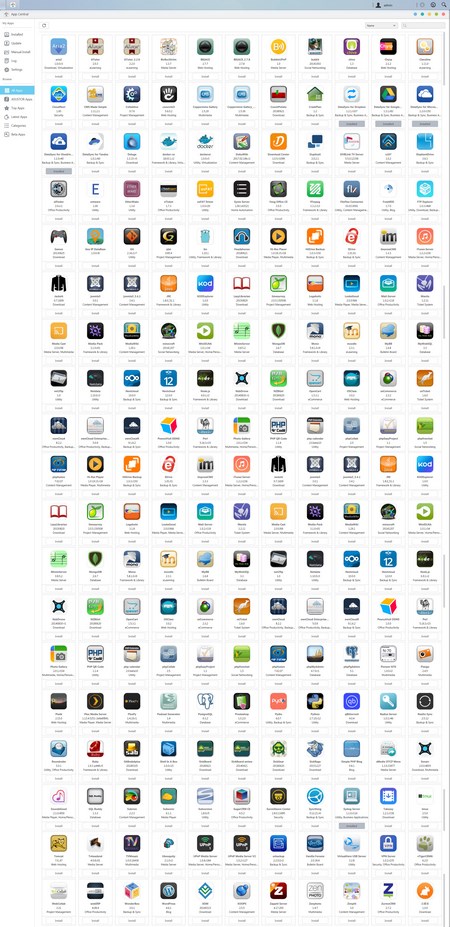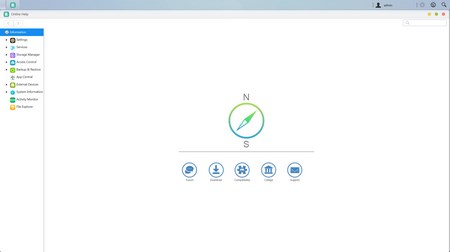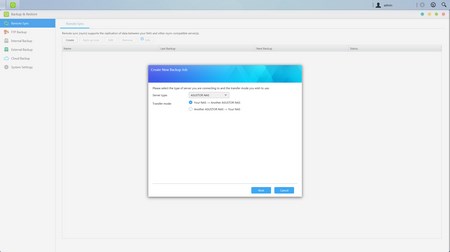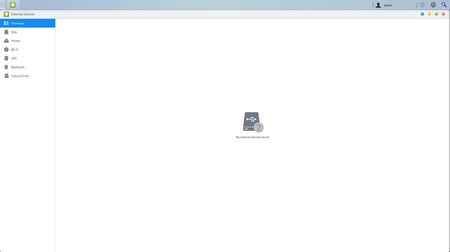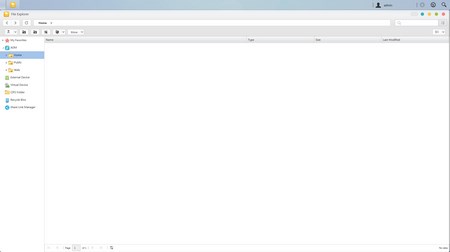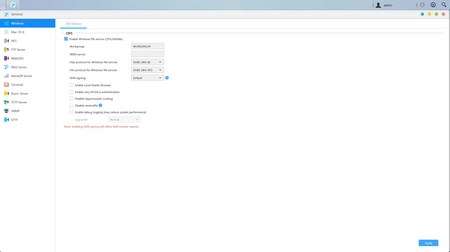ADM 3.2.1.BJI2 PART 1
For this test we used the latest beta version of ADM to test the AS1004T V2 and the first thing you'll see is a privacy notification (thanks to the recent General Data Protection Regulation - GDPR - passed in the EU a few months back).
Just like previous versions the main screen includes all the applications installed by default.
ASUSTOR is now using an adjustable resource monitor.
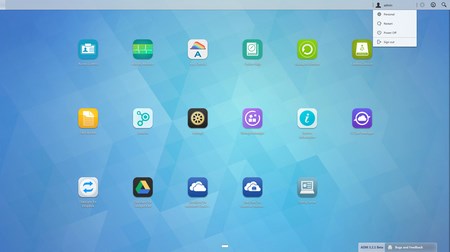
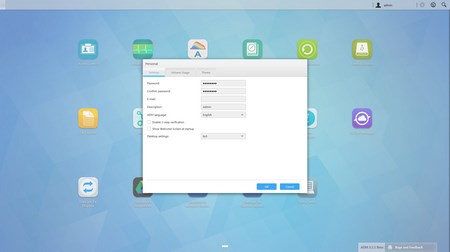
You can also access the layout settings menu and logout, restart or shutdown the NAS from the admin selection on the far right of the top bar.
As with all ADM versions to date from the Access tab you can add/remove user accounts, groups, domain users, domain groups and you can also create shared folders and set application privileges.
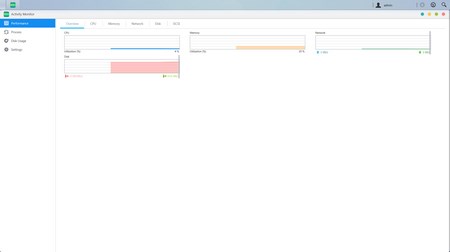
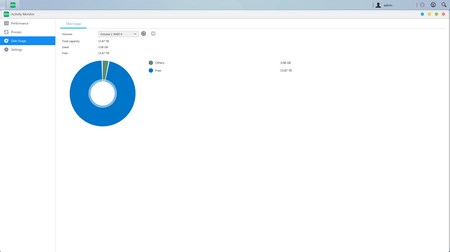
The Activity Monitor allows the end user to monitor the NAS so from here you can check the available space on the installed drive(s), check the CPU/Memory/Network/disk usage/utilizations and see what processes are currently running.
From the App Central you can see which applications are currently installed and of course add many more.
Although the higher-end NAS models by ASUSTOR have around 300 available apps the AS1004T V2 currently has a total of 209.
You can access information regarding all aspects of the ADM OS from within the Online Help tab.
The Backup & Restore tab allows you to remote sync options, setup FTP/Internal/External backup jobs, configure the one touch backup (front USB port), use the cloud backup feature (via Amazon S3) and also adjust the system settings.
From the External Devices tab you can check the state of attached drives, format them, prepare them for ejection and you can also check the state/adjust the settings for attached printers, Wi-Fi adapters and UPS devices.
The File Explorer page allows you to upload and download files from and onto the NAS without much effort (although i do recommend mapping a drive letter from your network options in Windows since it simplifies things quite a bit).
Under the Services tab the end user can find several server options for Windows/Mac OSX/NFS/FTP Server/WebDAV/Web Server/MySQL Server/Terminal/ MariaDB (MYSQL compatible)/ Rsync/ SNMP (PHP cashing is supported) and SFTP use.
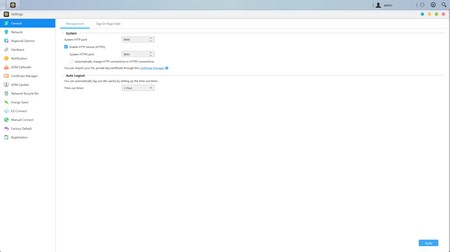
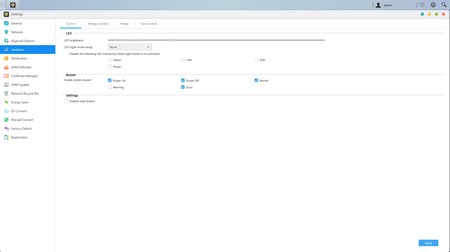
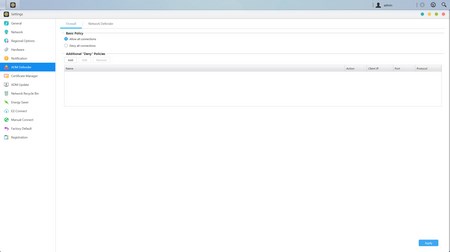
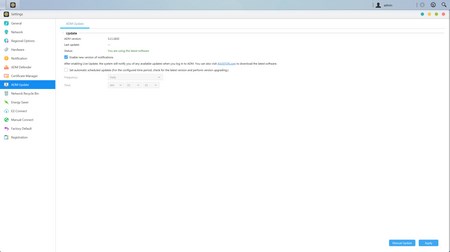
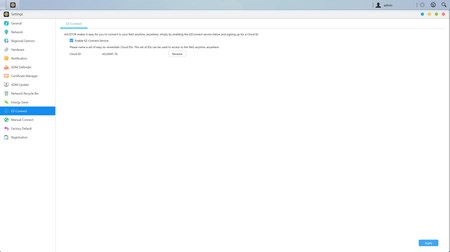
Pretty much everything else is placed inside the settings tab so from here you can adjust including the network settings, regional options, hardware options (LEDs/Buzzer/Fan control/Power settings), various notification options, ADM defender (firewall), certificate manager, ADM update (manual or automatic), network recycle bin, energy saver (drive standby mode/fan control/wake on LAN), EZ connect (remote access), factory default settings and product registration.

 O-Sense
O-Sense





